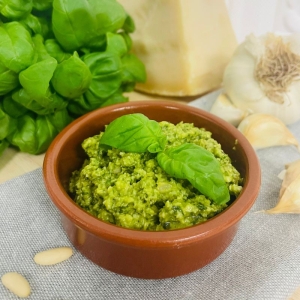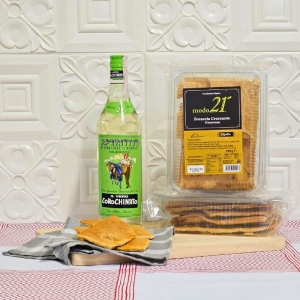What kind of pasta with pesto alla genovese?
Trofie, fresh gnocchi and trenette. These are the three most commonly used types of pasta with pesto alla genovese. One usually prefers either dry pasta or fresh pasta, but made with fewer eggs. The sauce must remain creamy but not be absorbed too much by the pasta: this is why Genoese lasagne or Genoese taglierini are also made with few eggs, which are not really present in the trofie dough. But let's find out more about the typical Ligurian pasta that is eaten with pesto alla Genovese.
Trofie with pesto
Nowadays, Genoese trofie (or trofiette) are produced in both dry and fresh versions. They originated, however, as fresh home-made pasta and remained a type of pasta for family use at least until the middle of the last century, when the first machine-made productions began.
Trofiette are a type of short pasta, whose twisted shape resembles a curl or chip. Since the area of origin is the Golfo Paradiso, which is close to Genoa, it is normal that trofie pasta is mainly seasoned with pesto.
Trofie with pesto is often served with diced potatoes and green beans (cooked together with the pasta).
Trenette with pesto
Genoese trenette are very similar to linguine: they are not quite flat but are characterised by their ovoid section. They are a type of long dry pasta. Like trofiette, trenette can be served with pesto, potatoes and green beans.
If you want to try another type of long Ligurian pasta instead of trenette, we can recommend Genoese taglierini: these are fresh taglierini, so they absorb more sauce; when you dress them with pesto, remember to dilute it with a little cooking water.
Gnocchi with pesto
Genoese gnocchi are fresh gnocchi made from potatoes. Potato gnocchi always remain very soft. Genoese pesto will seem even creamier once you eat it with gnocchi!
A tip for your pesto gnocchi recipe: calculate at least 250 grams of gnocchi per person.
Other pasta for pesto
Those we presented earlier are types of pasta typical of the Genoa area in particular. But pesto is eaten all over Liguria! That's why we are missing from our list some formats originating in the region that are also used with pesto.
For example, we cannot fail to mention croxetti (or corzetti del Levante), which are a typical pasta from the Varese Ligure valley. Croxetti have a characteristic shape reminiscent of a coin, small disks of pasta with reliefs printed on both sides. In home production, wooden moulds were used, carved with the family coat of arms. The reliefs on the pasta, apart from being very scenic, ensure that the corzetti del Levante pick up the sauce perfectly. Croxetti can be eaten either with a basil pesto or with a local walnut and marjoram pesto.
Also in the Levante we find testaroli al pesto, typical of Lunigiana (on the Tuscan border). Testaroli could be described as bread maltagliati: the dough is first baked in round baking tins, then when it has cooled it is cut into squares and blanched for a minute in salted water; then seasoned.
![]() By buying this product you can collect up to
1
point
By buying this product you can collect up to
1
point










































